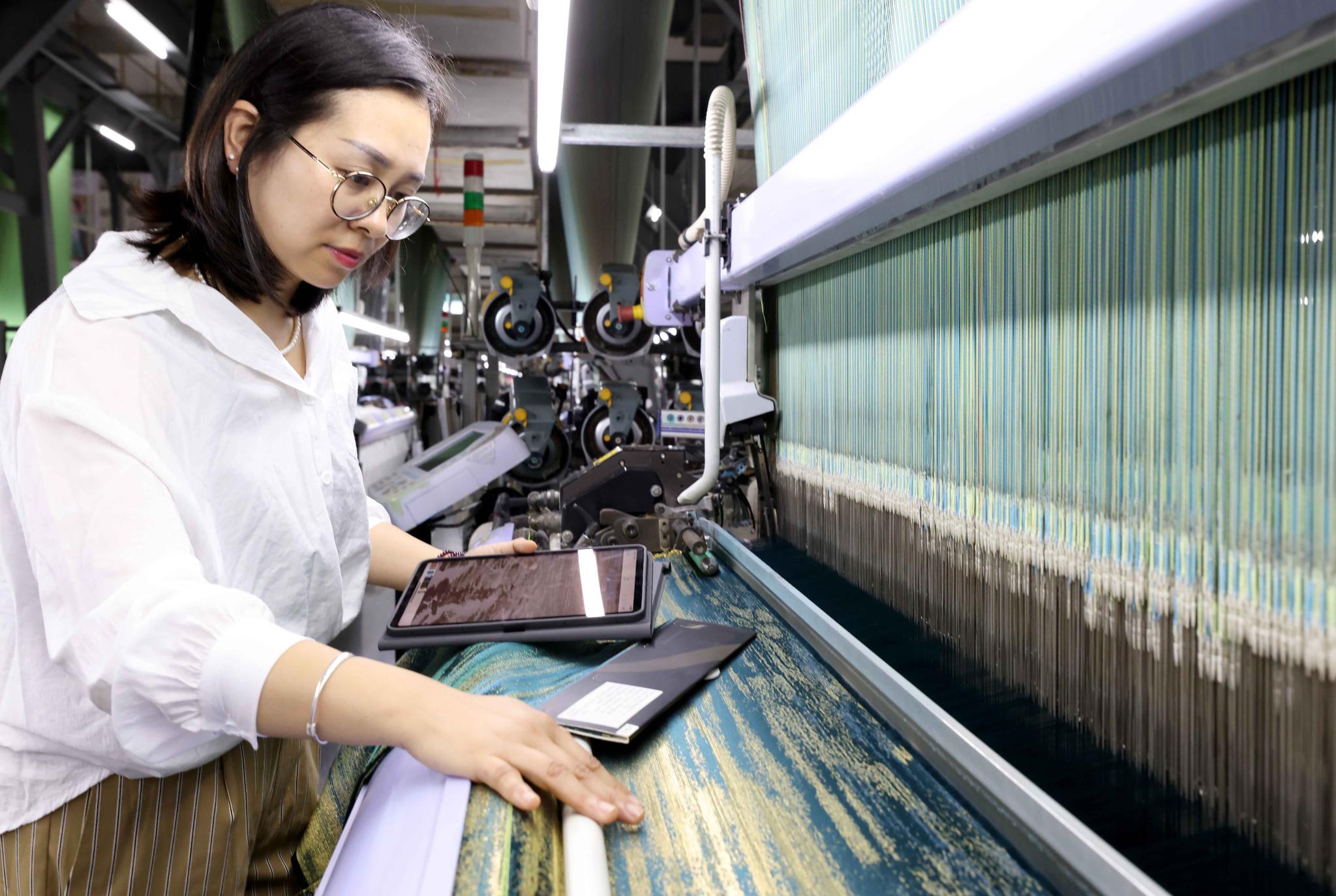Recently, I wandered in the gentle spring breeze, light rain, and mild wind, arriving for the first time in Keqiao, Zhejiang. I wanted to explore how this eastern riverside area became China’s most vibrant textile manufacturing center for trade and distribution.
Keqiao, located in Shaoxing City, is famous for its splendid white houses, arched stone bridges, and tranquil canal-side alleys. However, instead of immersing myself in the picturesque charm of the area, I found myself navigating through a bustling market complex, where nearly everything related to textiles was available.
This place is known as “China Textile City” (CTC), China’s first national-level specialized market for textiles. As I meandered through the colorful and intricately decorated maze of fabrics, I was ready to uncover the success story of Keqiao’s textile industry.
I met Xiao Xingshui, a senior businessman in the local textile industry. He told me that CTC started with a group of boat vendors selling textiles along the intertwining waterways of Keqiao, as China approved textile trade as part of its reform and opening-up policy. To create a well-organized trading platform, the local government established a temporary open-air market for the first batch of textile dealers in the late 1980s. CTC gradually grew, becoming officially upgraded to a national level in 1992.
After decades of development, CTC has become the most comprehensive textile center in the global industry chain, with annual fabric trading volume accounting for a quarter of the global total. In 2023, its transaction volume exceeded 360 billion yuan (approximately 51 billion US dollars).
I asked Xiao about the secrets behind Keqiao’s rise in the textile industry, expecting him to delve into broad topics like strategy or opportunities. However, his response was brief and simple: “Whatever you do, no matter how small, do your best.”
Standing out among the 8,000 textile manufacturing enterprises in Keqiao, Xiao’s company, Shaoxing Qianyong Textile Co., Ltd., embodies this entrepreneurial spirit. It evolved from an inconspicuous workshop to become the official designated supplier of uniform fabrics for the Beijing 2022 Winter Olympics and the Hangzhou Asian Games.
“Companies must create unique advantages,” he said. “Even though this feature may seem insignificant, it makes you irreplaceable, helping you survive in the market competition.” For Xiao, his company found its ace in digital direct printing technology, which can create water ripple patterns on nylon fabrics.
To maximize this unique advantage, the company focuses on research and development (R&D), emphasizing technological upgrades and innovation. Their independently developed nano-ink technology is a prime example, significantly improving printing accuracy and color vibrancy, and capable of creating ink dispersion and 3D effects on functional fabrics. This technology helped the company secure orders from global sportswear giants such as Nike, The North Face, and Lululemon.
Xiao mentioned that, like his company, many textile enterprises across Keqiao have embarked on technological innovation activities to cultivate technical strength.
The innovative spirit of Keqiao fascinated me. After some research, I discovered that Keqiao is home to over 250 high-tech textile enterprises, with 27,000 R&D professionals. The area boasts more than 20 scientific research institutions, including provincial-level modern textile technology innovation centers, better guiding technological resources to enterprise development.
As I continued to stroll through the market aisles, I couldn’t help but contemplate the future of Keqiao’s textile industry. To gain a better understanding, I conversed with a young entrepreneur, hoping to learn about his plans and visions for the future.
Despite being in his early twenties, Du Jiexin has gained some local recognition for managing Shaoxing Jialilong Textile Co., Ltd., a company focused on producing mid-to-high-end shirt fabrics for over twenty years, founded by his father.
Having witnessed Keqiao’s development into a textile hub, Du joined his father’s company, taking charge of creative design and promotion. While inheriting the practicality valued by Xiao and other experienced textile entrepreneurs, Du seeks to carve out new paths for the industry.
“In my father’s generation, the textile industry mainly produced clothing materials, but I want to venture into clothing design and production as an expansion of our business,” Du said. “Now, I manage a fashion design team and actively invite creative designers to join. My goal is to inject fresh styles and creative flair into classic textile scenes.”
Du mentioned that his company is actively embracing the revival of traditional Chinese culture, integrating traditional materials and cutting designs (including bamboo fabrics and horse-face skirts) into their textile and clothing collections.
“Chinese fashion is undoubtedly becoming the most popular style, so we must keep up with the trends,” Du said. He also added that he spends most of his time on social media to draw inspiration from Generation Z consumers, bridging the gap between the company and them.
During my trip to Keqiao, one word kept lingering in my mind: innovation. In this region, generation after generation of textile entrepreneurs, whether experienced or emerging, embrace an innovative spirit, constantly surging towards the forefront of the industry.
I also learned from the local market supervision department that they are leveraging cutting-edge technology to foster innovation. They have launched China’s first artificial intelligence-driven textile repeat inspection platform, allowing companies to upload their unique fabric designs. Each inspection takes only a few seconds, effectively safeguarding enterprise intellectual property rights.
According to the blueprint released in November 2023, by 2025, R&D investment by key textile enterprises in Keqiao will account for 1.5% of operating income, and two national-level innovation platforms will be established.
Additionally, it is expected that the fashion creative industry will form a trillion-yuan industrial cluster, with the design industry alone contributing 50 billion yuan to the region’s economic growth.
With the country’s drive for innovative development and efforts to create a favorable business environment for various enterprises, Keqiao and the textile industry are bound for a more vibrant and prosperous future.
